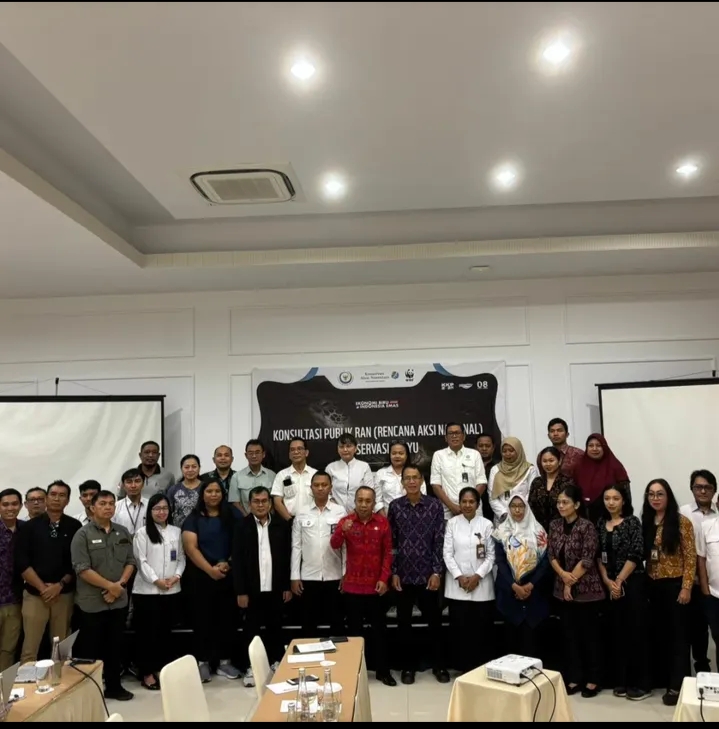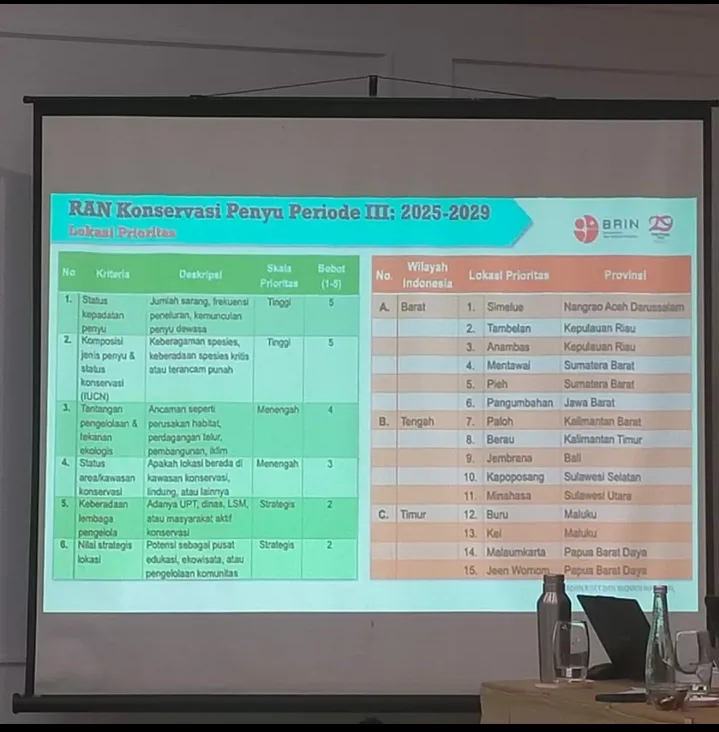Public Consultation “RAN” on the National Plan for Sea Turtle and Cetacean Conservation 2025-2029

As the world’s largest archipelagic country, with more than 17,000 islands and extensive marine areas, Indonesia plays a vital role in safeguarding globally protected marine species, including sea turtles and cetaceans (whales, dolphins, and porpoises). These two groups of species hold significant ecological functions in maintaining the balance of marine ecosystems and possess cultural, economic, and scientific value. However, their populations continue to face serious threats such as coastal habitat degradation, climate change, marine pollution, hunting, and bycatch from fishing activities.
To address these challenges, the Ministry of Marine Affairs and Fisheries (MMAF), together with strategic partners, has developed the national plan for the Conservation of Sea Turtles and Cetaceans 2025–2029 as a policy framework and conservation strategy for the next five years. Prior to its adoption, a public consultation was conducted to gather inputs, recommendations, and aspirations from diverse stakeholders. On 24–25 June 2025, BIONESIA participated in the Public Consultation for the RAN on the Conservation of Sea Turtles and Cetaceans 2025–2029, held at Santika Hotel, Seminyak, Bali, organized by the MMAF in collaboration with WWF Indonesia and Yayasan Konservasi Alam Nusantara. The forum brought together not only central and local government representatives but also academics, researchers, including those from the Badan Riset Inovasi Nasional (BRIN), and civil society organizations concerned with the sustainability of sea turtle and cetacean populations in Indonesia.
The consultation discussed several key aspects, including:
- Habitat Protection and Management—covering nesting beaches for sea turtles, migratory corridors, and critical habitats for cetaceans.
- Threat Reduction—strategies to minimize bycatch, plastic pollution, underwater noise, and other maritime activities affecting these species.
- Research and Monitoring Enhancement—strengthening scientific databases through genetic studies, population monitoring, and the use of technologies such as satellite tagging and acoustic monitoring.
- Coastal Community Empowerment—building community capacity in conservation through local wisdom and developing environmentally friendly alternative livelihoods.
- National and International Collaboration—cross-sectoral synergy and commitment to regional and global agreements on migratory marine species protection.
The RAN for the Conservation of Sea Turtles and Cetaceans 2025–2029 is structured with measurable strategic frameworks, ensuring that each program and activity produces clear outputs and indicators of success. Expected outcomes include:
- Identification and protection of critical habitats
- Output: Designation and management of turtle nesting beaches and key cetacean habitats, including migratory routes.
- Indicator: Number of critical habitats established as conservation areas or granted special protection.
- Reduction of threats to sea turtle and cetacean populations
- Output: Bycatch mitigation programs in the fisheries sector, reduction of plastic pollution, and more effective response to cetacean strandings.
- Indicator: Annual decline in the number of turtles and cetaceans killed due to human activities.
- Strengthened scientific research and database
- Output: Integration of genetic, population, distribution, and migration data of sea turtles and cetaceans into the national system.
- Indicator: Number of research outputs, publications, and accessible national databases available to stakeholders.
- Increased participation of coastal communities in conservation
- Output: Education, training, and development of environmentally friendly alternative livelihoods for communities near sea turtle and cetacean habitats.
- Indicator: Number of community groups actively involved in conservation activities and improved well-being through sustainable livelihood initiatives.
- Strengthened cross-sectoral and international collaboration
- Output: Partnerships with international institutions, universities, NGOs, and the private sector to support sea turtle and cetacean conservation.
- Indicator: Number of cooperation agreements, collaborative programs, and funding contributions from various partners.
- Enhanced regulatory and policy framework for conservation
- Output: New or revised regulations supporting the protection of sea turtles and cetaceans.
- Indicator: Number of policies adopted and implemented at national and local levels.
Through these outcomes, the RAN for the Conservation of Sea Turtles and Cetaceans 2025–2029 is expected not only to serve as a planning document but also as a practical instrument to reduce threats, improve protection effectiveness, and strengthen multi-stakeholder collaboration in conserving Indonesia’s charismatic marine species. Its implementation will also reinforce Indonesia’s contribution to global commitments on biodiversity protection and the achievement of the Sustainable Development Goals (SDGs), particularly SDG 14: Life Below Water.
